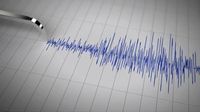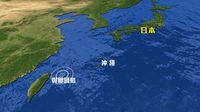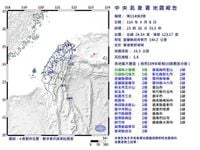In the early hours of April 9, 2025, a magnitude 5.6 earthquake struck off the coast of Okinawa and Yonaguni Island in Japan, prompting no tsunami warnings from local authorities. The earthquake occurred at 00:26 local time, with its epicenter located at a depth of 120 kilometers, as reported by the Japan Meteorological Agency.
Despite the tremor's strength, there were no immediate reports of casualties or damage. The agency classified the earthquake as a mid-level seismic event, with the maximum intensity recorded at 3 in areas such as Zhubei City and Shihtan Township, while Yonaguni Township experienced a lower intensity of 2.
Interestingly, just hours before this earthquake, a separate but notable seismic event occurred in the eastern waters of Taiwan. At 23:26 on April 8, a 5.9 magnitude earthquake was registered approximately 144.2 kilometers east of the Yilan County Government, with a focal depth of 15.3 kilometers. This quake was felt across nearly all of Taiwan, with a maximum intensity of 3 reported in Hualien County.
The Central Meteorological Administration of Taiwan confirmed that the tremors were significant enough to be felt in various regions, including New Taipei City and Taichung City, where intensity levels reached 2. Even Taipei City reported a light intensity of 1, indicating that the seismic activity was widespread.
Both earthquakes occurred almost simultaneously, highlighting the seismic activity in the region. The Japan Meteorological Agency also provided information on the quake near Yonaguni Island, indicating that it had a magnitude of 2.6 at the same time as the Taiwan earthquake, further emphasizing the area's geological volatility.
As the situation unfolded, local authorities in both Japan and Taiwan remained vigilant, monitoring for any aftershocks or changes in seismic activity. The lack of a tsunami warning was particularly reassuring, given the potential dangers associated with underwater earthquakes.
Seismologists noted that while the earthquakes were significant, they fell within a range that typically does not lead to major disasters. However, the region's history of seismic activity serves as a reminder of the earth's unpredictable nature.
In the aftermath of these events, experts continue to study the geological implications of such earthquakes, particularly in the context of the Pacific Ring of Fire, where tectonic plate movements are frequent. The Pacific Ring of Fire is known for its high levels of seismic activity, which includes both earthquakes and volcanic eruptions.
Residents in affected areas have been advised to stay alert and prepared for potential aftershocks. Emergency services remain on standby to respond to any incidents that may arise due to the earthquakes.
The recent seismic events also sparked discussions among local communities about earthquake preparedness and response strategies. Authorities emphasized the importance of having emergency kits ready and knowing evacuation routes in case of significant seismic activity.
As both Japan and Taiwan continue to navigate the aftermath of these earthquakes, the focus remains on ensuring public safety and understanding the geological forces at play in this seismically active region.
In conclusion, while the earthquakes of April 8 and 9 did not result in immediate harm, they serve as a reminder of the constant geological activity in the region and the importance of preparedness in the face of natural disasters.








